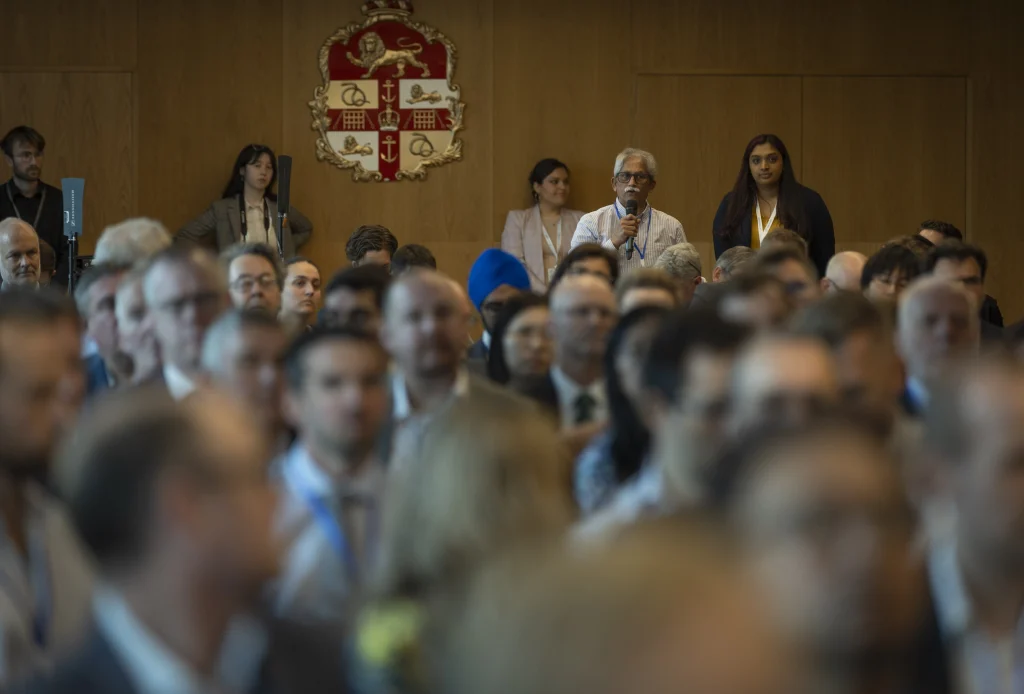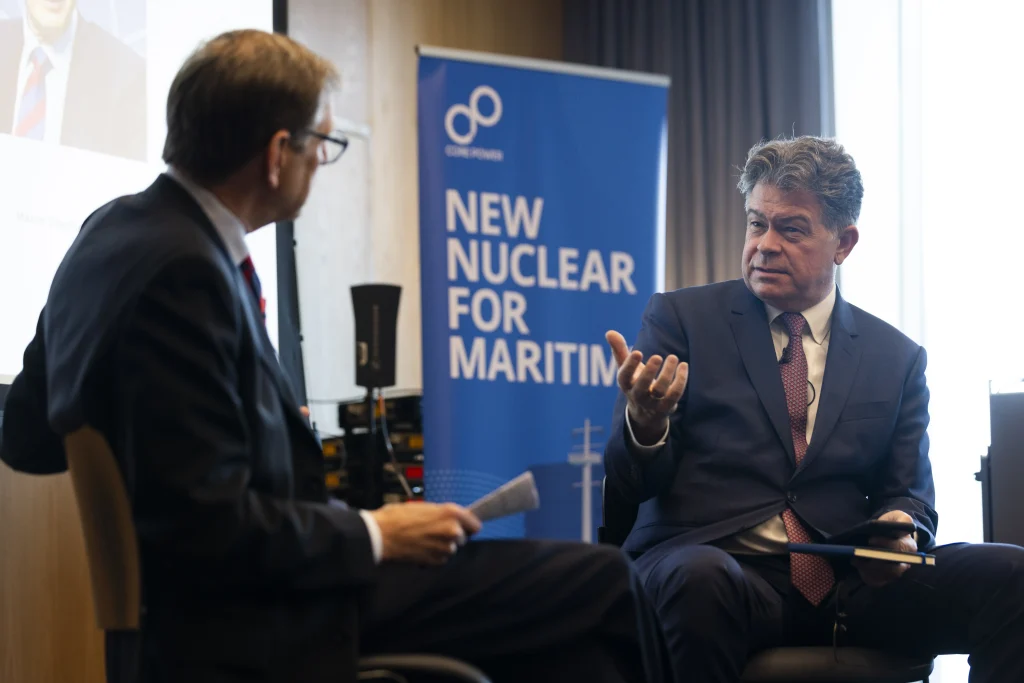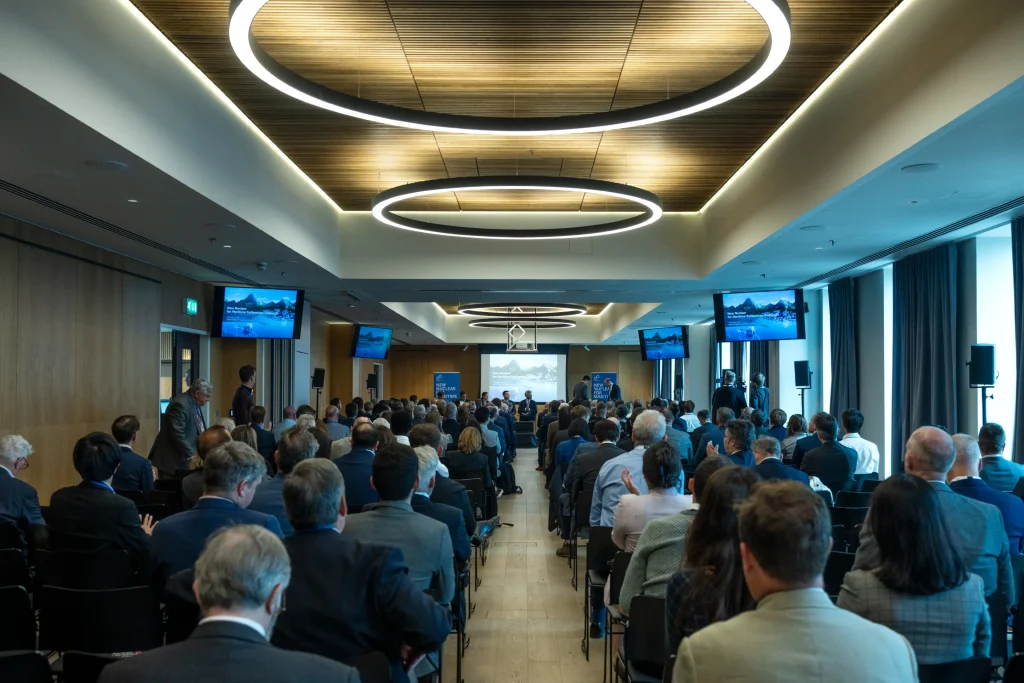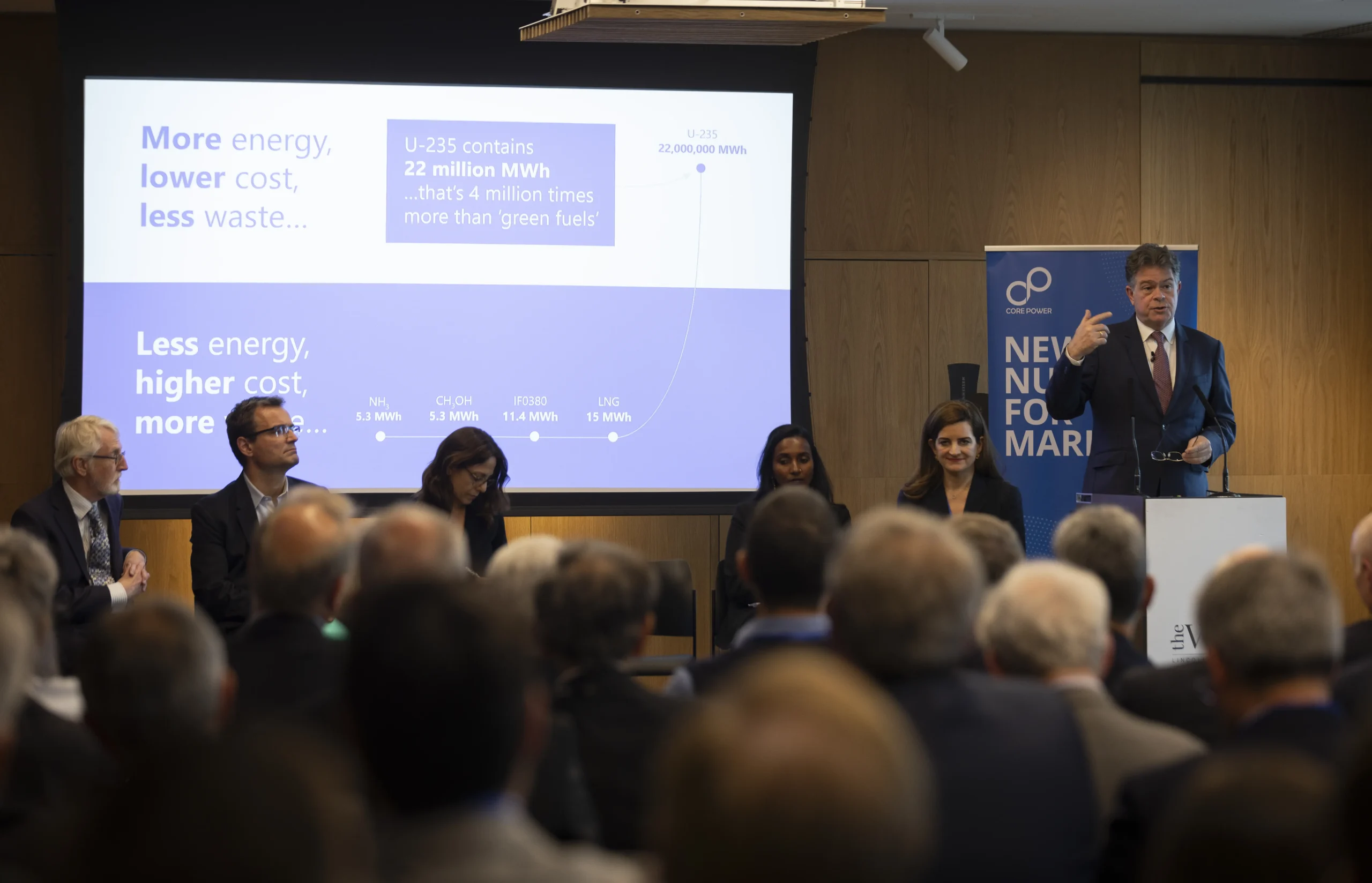CORE POWER, a London-based provider of nuclear engineering services, recently held the “New Nuclear for Maritime Summit” in London. The summit saw a record attendance of over 350 maritime industry professionals.
During the seminar, participants discussed key issues such as energy security, decarbonization, regulations, standards, market trends, technologies, and economic considerations. The event also featured vigorous discussions on the challenges currently faced in implementing nuclear energy in maritime applications. Over 40 panelists, including experts from the nuclear, maritime, finance sectors, and regulatory authorities, contributed to the discussions.
(Text by Hirofumi Yamamoto) Photo courtesy of CORE POWER

The recent summit was held in mid-June in London.
Mikal Bøe, Chairman and CEO of CORE POWER, commented, “The fact that many participants engaged in discussions on maritime nuclear power at this summit underscores the growing significance of nuclear energy in addressing climate change within the maritime industry.”
The summit featured presentations from members of key segments of the maritime industry, including dry bulk, tankers, cruise lines, container shipping, ports, and shipyards.

Specifically, experts in nuclear technology, safety, and security actively discussed how integrating new nuclear technologies into floating structures and vessels can achieve both energy resilience and zero emissions.
Since the inaugural CORE POWER Summit in 2022, this fifth event saw a fivefold increase in participants compared to the first gathering. All attendees examined critical points to prepare for the introduction of new nuclear power in the maritime sector.
“Participants in the maritime industry must consider how to invest in building the skills, knowledge, and tools necessary for future new nuclear energy systems. Achieving net zero without nuclear power is impossible; this is truly the final phase of the energy transition,” explained Bøe.

During this summit, it was concluded that the key to successfully introducing new nuclear power into the maritime industry lies in implementing technology solutions suitable for use in marine environments. To overcome such challenges, three important criteria were highlighted: the need for a very narrow emergency planning zone around the equipment during the introduction of nuclear energy, ensuring the safety of the system, and the adoption of long-term fuel cycles to avoid handling spent nuclear fuel at ports.

Reflecting on the summit, Bøe stated, “With the right conditions in place, we informed both the International Maritime Organization (IMO) and the International Atomic Energy Agency (IAEA) about the revised safety standards for floating nuclear power plants and nuclear-powered ships. We expect significant progress in the introduction of nuclear energy to ships over the coming years, as the international community updates standards for the new maritime nuclear power set to be commercialized in the 2030s.”
